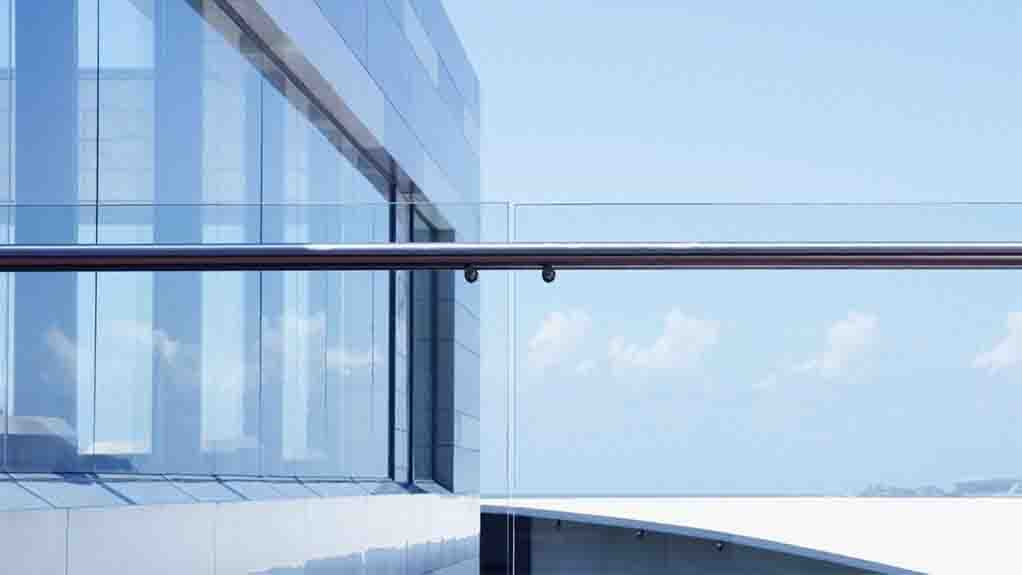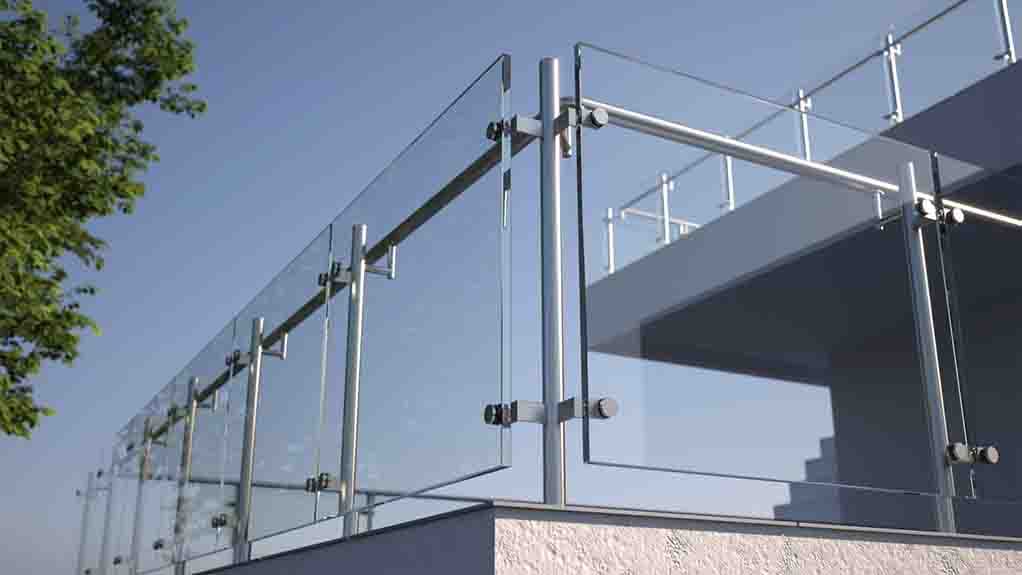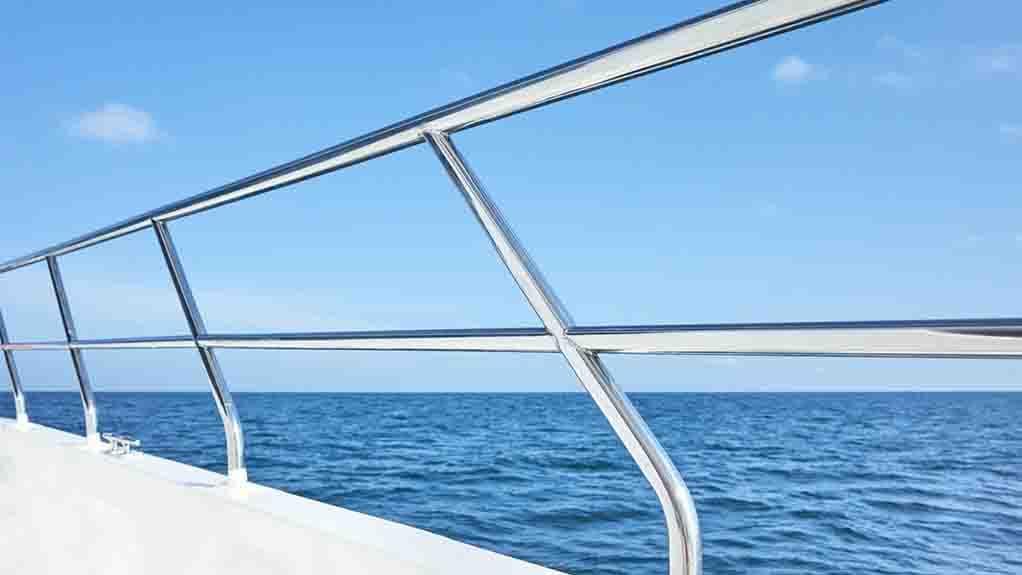Glass Railings vs. Cable Railings Comparison Table
| Aspect | Glass Railings | Cable Railings |
|---|---|---|
| Cost | Higher upfront cost due to custom-made glass panels and assembly components. Lower maintenance costs over time. | Lower upfront cost as posts and tensioning components are usually cheaper. Higher maintenance costs over time. |
| Durability & Maintenance | More durable and scratch-resistant. Requires periodic cleaning and inspection for chips or cracks. | Prone to wear and tear due to metal cables. Requires more frequent cleaning and tension adjustments. |
| Design Options | Sleek and sophisticated look with clear glass panels. Can be customized with different glass thicknesses, colors, and patterns. | Lighter and airier aesthetic with thin steel wires. Can be installed horizontally or diagonally, and can be supplied in various colors and finishes. |
| Safety | Composed of tempered, laminated, or annealed glass. May not be the best choice for areas with a lot of activity or where the railing is subject to regular wear and tear. | Typically made of stainless steel, aluminum, or another durable material. Strong and long-lasting, making it a better option for areas with active children or pets. |
| Installation Requirements | Requires specialty tools and a certain level of expertise. | Relatively straightforward installation process that doesn’t require specialized tools or supplies. |
| Building Regulations | Must meet safety guidelines for impact resistance and transparency. | Similar regulations to glass railings, but may require additional components depending on the installation area. |
| Pros | Modern design, long-lasting finish, and adaptability. | Lower purchase cost, easy maintenance, and high durability. |
| Cons | High initial cost, fragility, and complex installation requirements. | Visually uninteresting, limited design options, and visible wires. |
When it comes to installing railings for stairs or balconies, homeowners have two great options: glass railings and cable railings. Glass railings offer a classic and timeless look while cable railings are a modern and stylish design. But what are the differences between them and which one is preferable? This guide will explain the cost differences, durability and maintenance considerations, design options, safety risks, building regulations, and installation requirements of both glass and cable railing systems.
Table of Contents
Comparing Cost Differences
When it comes to deciding between glass railing and cable railing systems, one of the main considerations for many people is cost. Each type of railing system has its own associated costs that must be taken into account.

Glass railings typically cost more upfront, due to the price of custom-made glass panels, as well as the components needed to assemble the system. However, since they require less maintenance over the long term, installation costs can be offset in the future. Cable railing systems, on the other hand, often require less upfront investment, as posts and tensioning components are usually cheaper than the glass panels used in a glass railing system. However, they may require more frequent maintenance, which can add to the overall cost of the project.
- Glass railing systems typically require more upfront investment, but offer long-term cost savings due to less regular maintenance.
- Cable railing systems can be more cost-efficient initially, but may require higher levels of maintenance over time.
Durability & Maintenance Considerations
When you’re installing a new railing system for your home or office, you’ll want to ensure that it can withstand the rigors of daily use. Glass and cable railings are both popular options, but they have very different levels of durability and maintenance requirements.
Glass railings are the more durable option, as they tend to be scratch-resistant and easy to clean. However, they do require some level of maintenance, such as wiping down the glass panes periodically and keeping an eye out for chips or cracks. Cable railings, on the other hand, are more prone to wear and tear since they’re made of metal cables. They often need to be cleaned more frequently, and over time, the tension in the cables may need adjusting.
Design Considerations
When deciding between glass railing and cable railing, it is important to consider the design options available. Both glass and cable railing systems provide a modern and stylish look to any room or outdoor space. However, there are distinct differences in the design options afforded by each type of material.
Glass railings provide a sleek and sophisticated look, as the clear glass panels maintain an unobstructed view of the surrounding area. Depending on the specific design, glass railings may be customized with alternating glass thicknesses, colors, and patterns.
Cable railings offer a lighter and airier aesthetic as thin steel wires twist and turn through the support posts. Cable railings can be installed horizontally or diagonally, and can be supplied in various colors and finishes. The most common colors are stainless steel, black, white, and bronze. For additional customization, the wires can also be replaced with rope or stained wood to create a unique look.
It is important to carefully select the right style of railing for your project to ensure that it complements the existing decor and architecture of your property. Both glass and cable railing systems come in many different configurations and styles to accommodate any design preference.
Safety Considerations for Glass Railing vs. Cable Railing
Installing railings in your home, whether it’s to provide safety from falling or simply to create a beautiful addition to your outdoor living space, should always be done with safety and durability in mind. While both glass railing and cable railing systems provide a high degree of safety and security, there are some key differences between the two that you need to consider before making a final decision.
Glass railing systems are composed of tempered, laminated, or annealed glass, while cable railing systems are typically made of stainless steel, aluminum, or another durable material. In terms of basic safety, both glass and cable railings offer a secure barrier for outdoor spaces, but some potential risks must be taken into consideration. As glass is a more breakable material, it may not be the best choice for areas with a lot of activity or where the railing is subject to regular wear and tear.
Cable railing systems offer greater flexibility when it comes to both design and safety, as they are available in a wide variety of sizes and styles. Additionally, they require less maintenance than glass railings, as cables don’t require sealing or frequent cleaning. For areas with active children or pets, cable railings may be a better option as they are strong and long-lasting.
No matter which system you choose, make sure that the installation meets local building codes and safety regulations and that all components are securely fastened into place. Be sure to check out our resources page for additional information on installing glass and cable railings.
Installing Glass and Cable Railings: What You Need to Know
Installing glass or cable railing systems can be a daunting task, especially for those with little experience in the area. Before you tackle such a project, it’s important to understand the tools, supplies, and skills needed for installation.
Glass Railing installation Requirements
Glass railing installations can be a complex process that requires specialty tools. You will need to have drill bits and hole saws specifically designed for drilling through glass, as well as all the usual tools, such as wrenches, screwdrivers, levels, and pliers. Additionally, glass railings typically require the use of specially designed fastening clips which must be purchased separately.
In terms of supplies, you may need to purchase tempered glass panels, spigots, adhesive, and caulk. It is important to make sure you purchase these materials from a reputable source, as glass railings require strong and durable components that can withstand wear and tear.
As for skills, installing glass railings requires a certain level of expertise. You should have a basic understanding of construction and carpentry techniques, as well as being comfortable marking, measuring, and cutting glass. If you are unsure of your abilities, it may be wise to hire a professional contractor to complete the installation.

Cable Railing installation Requirements
The installation of a cable railing system is relatively straightforward, and does not require any specialized tools or supplies. You will need the usual range of power tools, such as drills, saws, and wrenches, and it is recommended to have a set of wire cutters for trimming cables. In terms of supplies, you will need to purchase stainless steel posts, railing supports, and cables.
Cable railing installations do not require a high level of expertise, however there are some specialized skills and techniques involved. It is important to understand how to accurately measure and cut cables, as well as how to secure them so that they are safe and secure. It is also important to ensure that the railing system meets local building codes and regulations.
Building Regulations
When considering glass railing vs. cable railing, it’s important to know about building regulations that apply to both. All railings must meet building codes and regulations set forth by the local building authority. Generally, railings should be at least 34 inches in height and must have enough structural support on each side of the opening. Glass railings must also meet safety guidelines for impact resistance and transparency.
Cable railings follow similar regulations, however they may require additional components such as tensioners and posts depending on the installation area. It’s important to check with the local authority for specific rules and regulations applicable to your project.
Pros and Cons Summary
When it comes to selecting the right railing for your home, weighing the pros and cons of glass railing vs. cable railing is an important step in the decision-making process. Here is a summary of the advantages and disadvantages associated with each type of railing:
Advantages of Glass Railings:
- Modern Design – Glass railings offer a sleek, contemporary look that can coordinate with a variety of interior décors.
- Long Lasting Finish – Glass railings resist wear and tear and are unlikely to chip or fade over time. Adaptability – Glass railings are available in many different shapes and sizes, allowing you to customize the perfect railing solution for your space.
Disadvantages of Glass Railings:
- High Initial Cost – Glass railings generally cost more than cable railings due to the materials used in construction.
- Fragility – Glass railings are not as strong as cable railings, so they may be more susceptible to damage from impacts or heavy winds. Installation Requirements – Installing glass railings typically requires professional installation, making it more expensive and time consuming than installing cable railings.
Advantages of Cable Railings:
- Low Purchase Cost – Cable railings tend to be less expensive than glass railings, which makes them an attractive option for budget conscious consumers. Easy Maintenance – Cable railings require minimal maintenance and upkeep, making them ideal for busy homeowners. Durability – Cable railings are extremely durable and can withstand a variety of weather conditions.
Disadvantages of Cable Railings:
- Visually Uninteresting – Cable railings can have a utilitarian appearance that may not suit all spaces or décors.
- Limited Design Options – There are fewer design options available with cable railings compared to glass. Visible Wires – Cable railings may not give the same sense of privacy as glass railings, as the cables are often visible even when the view is blocked.
Where to Find the Supplies for Your Project
When you’re planning an installation project for either glass railing or cable railing, it’s important to know where to source the necessary parts and materials for the job. Depending on the type of railing you’re working on, there are a variety of options when it comes to purchasing the supplies you need.
If you’re looking for materials for your glass railing system, then you should start by checking with local home improvement stores and specialty glass supply shops. You may also be able to find what you’re looking for at online retailers. Glass railing systems typically require custom-cut panels, posts, and rails, and these can be sourced from professional installers who specialize in supplying these materials.
When it comes to cable railings, you’ll need to buy components like the cables, posts, and brackets separately. Home improvement stores usually stock single cables in various lengths, or you can buy ready-to-install pre-assembled cable railing kits online. Additionally, there are many companies that specialize in selling cable railing supplies, which can often provide greater customization options than pre-assembled kits.
Step-by-Step Instructions for Installing Glass and Cable Railings
Installing a glass or cable railing system is not difficult, but it does involve some time and effort. To ensure your railing installation goes smoothly, it’s important to have a clear plan before beginning. Here are step-by-step instructions for installing both types of railing.
Glass Railing Installation
A glass railing can give any outdoor space an unforgettable look. Here’s how to install one:
- Measure and cut the glass panels for your railing system, taking care to ensure accuracy.
- Secure the base plates to your wall or balcony with concrete anchors or screws, depending on the mounting surface.
- Attach the posts to the base plates, making sure the posts are completely level.
- Mount the glass panels into the posts, making sure that all panels are properly secured and even.
- Attach the handrail to the top of the posts, using silicone sealant or caulk to ensure a watertight fit.
Cable Railing Installation
Cable railing systems offer a minimalist look and help to maximize views. Here’s what you need to do:
- Lay out the posts on the floor or on a table, ensuring that they are level and evenly spaced.
- Mount the posts onto your wall or balcony with concrete anchors or screws.
- Using a drill and a hole saw, create holes in each post for the cable rails to run through.
- Stretch the cable rails between each post, using a tensioning tool to tighten the wires.
- Finish the installation by attaching the top rail to the posts and using a cable crimping tool to secure the ends of the cables.

Conclusion
When deciding between glass railing and cable railing, there are a few key factors to consider. Cost can be an important factor, with glass railings usually being the more expensive option. Durability and maintenance needs should also be taken into account, as glass railings require more upkeep and care than cable railings. Design options vary for both systems, with cable railings being more customizable for a range of aesthetic preferences. Safety is another major factor, as glass railings may not be as secure as cable railings in some environments. Additionally, each railing system has its own set of installation requirements and building codes. After weighing all of these factors, you can make an informed decision about which railing system is preferable for your project.
FAQs About Glass Railing vs. Cable Railing
1. What is glass railing and cable railing?
Glass railing is a type of railing system made of tempered, impact-resistant glass panels that are suspended from posts to create a handrail for steps, staircases, balconies, decks, and other outdoor surfaces. Cable railing is an alternative railing system designed to provide a horizontal, modern, unobstructed view composed of thin cables installed between posts.
2. What should people consider when deciding between glass railing or cable railing?
When deciding between glass railing and cable railing, it is important to consider the cost differences between the two options, the durability and maintenance needs, design preferences, safety risks, and any tools, supplies, and skills required for installation.
3. What types of materials and accessories are available for glass and cable railings?
Materials for glass railings are typically tempered, impact-resistant safety glass and aluminum posts installed with either a post-mounted glass or clamp-mounted glass system. Accessories for cable railing systems commonly consist of steel posts, top rails, end caps, pickets, washers, attachments, swageless jaw terminals, and threaded rod tensioners.
4. Are building codes and regulations different for glass and cable railing installations?
Yes, different building codes and regulations apply to both glass and cable railing installations depending on the location. It is important to research and understand the building codes in your area before installing either type of system.
5. How should people decide between glass railing or cable railing?
Ultimately, it depends on the individual’s budget, design preferences, and safety needs. People should consider the cost differences, the durability and maintenance needs, design options, and safety risks associated with each railing system to make the best decision for their home.
6. What resources are available for sourcing materials for glass and cable railings?
There are a variety of online and local stores that offer compatible materials and accessories such as posts, top rails, end caps, pickets, washers, attachments, swageless jaw terminals, and threaded rod tensioners for both glass railings and cable railings. Do an online search to locate suppliers for these materials.
7. Where can I find step-by-step installation instructions and video examples for glass railings and cable railings?
Step-by-step installation instructions and helpful video examples for installing glass and cable railings can typically be found on manufacturer websites and through online searches.
